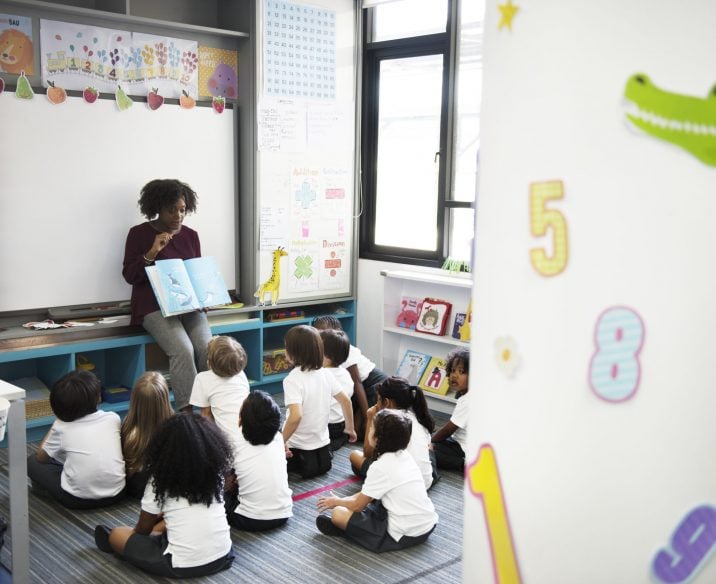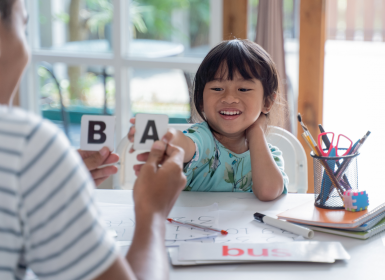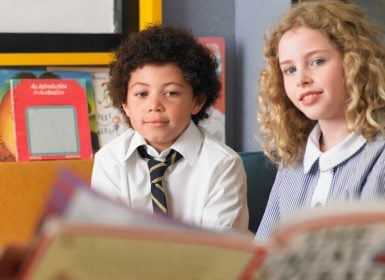
Teachers work very hard to help students become competent with mathematics so that they have the skills to progress through the curriculum. We know that within the classroom students have a range of abilities and are at different stages of their skills development journey. If students do not have a strong grasp of the basics in mathematics, it is very hard for them to follow the set curriculum and keep up with their peers.
Students who struggle with mathematics will benefit from maths teaching that focuses on foundation skills and extra instruction in the four operations. This enables students to learn mathematics effectively and progress to the proficient use of more complex mathematical formulas and calculations. It is not until students are confident in their use of the four operations that they are able to build upon their knowledge in other areas of mathematics. This presents a challenge for classroom planning and instruction.
Dr Samantha Hornery, Education Manager at Learning Links, is an expert at teaching young people who have difficulty with maths. She acknowledges the challenge that teachers face between a student’s year level and their knowledge gaps.
“We have a maths syllabus to teach, and it is big! But when a student is in Year 9, the curriculum demands of fractions and algebra are out of reach until they can add, subtract, multiply and divide. We can teach the process for fractions and algebra, but must find a way to focus on the actual mathematics.”
Strategies for teaching maths
Here are some important strategies to help you improve the way you teach foundational maths skills in the classroom:
Explicit Instruction
Research by Powell, Hughes and Peltier (Myths That Undermine Maths Teaching, 2022) has shown that starting lessons with clear language and direct instructions is an important part of student learning and that “embedding high-quality instructional tactics focused on reinforcing student engagement, task persistence, and self-regulation while also delivering high-quality mathematics instruction is critical.”
The best maths teaching strategies build on the foundational knowledge of numbers and counting. Just like when children are learning to read and they are taught about the sounds (phonemes) and letters (graphemes) with a synthetic phonics approach, explicit instruction is needed in mathematics to understand single digit numbers and their relationships to each other.
Teachers need to provide lots of opportunities for repetition and for retrieval practice, short bursts of review at regular intervals. If students can spend 10 minutes at the start of each lesson reviewing the basic facts and mathematical language and completing a few practice questions before adding new information, they will find the process of learning new concepts like fractions and decimals much more achievable.
One of the best strategies for teaching maths is to start lessons with really clear language. Some words have different meanings in a mathematical context and this needs to be explained in detail. For example, when teaching concepts of measurement such as volume, teachers can start each lesson by explicitly naming the language required so there is no confusion.
Explicit instruction needs to be supported by multiple opportunities for automaticity in the following operations and in this order to help children build on the foundation skills of maths:
- Counting
- Numeral identification
- Place value
- Addition and subtraction of single digits – then multiple
- Multiplication and division of single digits – then multiple
Tip: Don’t assume that your students know the language you’re using. Take a few minutes to review, provide clear definitions, and then begin the lesson.
Action: Think about a maths concept you’re teaching next week. List all the language and skills your students need to know. Revise them first and observe the difference it makes for your students.
Counting
“Counting is at the centre of everything in mathematics,” says Dr Hornery. “Our students need to be able to count forwards and backwards, by 2s, by 5s, by 10s, by 100. At its very basis, addition is just counting forwards, subtraction is just counting backwards, multiplication is counting by groups (and if you can multiply, you can divide with some help).”
A simple strategy for teaching foundational maths skills is to incorporate counting exercises into each lesson. This can act as a warm up to prepare for the lesson ahead and the more time students can spend practising this core skill, the better. They are laying the foundations for the four operations and more complex computations. It’s like building memories of phonemes (sounds) and graphemes (letters) for reading and spelling.
To add numerals together our students must be able to identify, produce and count with those numerals, single digits then double digits
Tip: Spend extra time teaching students about place value, especially teen numbers when introducing counting. They are an irregular pattern within the counting system and need to be learned as such. Don’t assume that your older students know what place value is. A quick review will never be time wasted. Help your students feel confident and proficient in place value to work with larger numbers.
Action: What counting pattern could you practice in a maths lesson tomorrow? Just start!
Maths Manipulatives – visuals and concrete materials
Many of our maths concepts are quite abstract, we try to make this more “real” to students by writing worded maths questions about buying watermelons and sharing lollies, but it is still an abstract concept. Children learn maths by representing these concepts using materials and by drawing. They make 2 with blocks and then another 3 with blocks – when these are brought together, they make 5 blocks. This early experience with the materials helps students to understanding and apply meaning to these abstract notions of number.
To develop and support your students’ counting skills, make visual cues and concrete materials available in the classroom at all times. These might include:
- A Place Value chart
- Hundreds chart
- Concrete materials – counters, MAB blocks, Cuisenaire rods
While your students are in the early learning phase, we anticipate they will make some mistakes. At this stage, rely less on written algorithms to form incorrect memories and instead teach maths orally, demonstrate with cards, or use online programs to select the answer, so they are not reinforcing incorrect answers. Once they are more confidently using the mathematical operations, writing the correct answers down builds confidence and a stock of knowledge. To start with, use visuals and concrete materials.
Tip: When planning lessons and selecting concrete materials be mindful of the cognitive load of your students. Ask yourself, is this necessary? Does it help?
Dr Hornery suggests that you aim to keep your resources as simple as possible. Your students may not need their counting blocks to be ‘fun’ shapes and colours. In fact, the cognitive load of a range of resources may actually distract them from the process of learning. “You just need to make it simple. We need to help them build confidence up.”
Worded Problems
Worded problems are a way to practice application of maths knowledge. It is the end product of our maths programs – for students to be able to identify the best buy in the supermarket, select the best mobile plan, buy enough paint for their house… Before our students can solve worded problems, they need the tools to do this – skills in addition, subtraction, multiplication, and division.
We recommend that teachers curate worded maths problems so that they are not overly complex. Choose practical worded problems that allow students to practice their mathematical skills. Teachers should employ maths teaching strategies which explicitly teach the language and vocabulary of mathematics to help students understand the question. Once a student works out what the question is asking them, the answer is usually quite easy for them to decode.
Remember
One of the features of Dyscalculia is that students are slower to respond to teaching and interventions than their peers. With practice and focused teaching your students will improve, but ‘better’ will look different for everyone. The rest of the class keep learning mathematics and improving as well, we must help students to develop the foundation skills that make future mathematics learning possible.
Additional Resources
We aren’t spoilt for choice in mathematics as we are for reading interventions. In Australia we have a new organisation, the Australian Education Research Organisation, who will begin to develop practice guides for teachers – visit this regularly.
Some resources you may wish to consider include:
- QuickSmart Maths – Australian based intervention from UNE
- Maths U See (Australian Edition)
- Direct Instruction Programs (Maths Mastery, SRA Materials)
- Number Worlds (McGraw Hill remediation program)
- Ronit Bird books
- Dr Paul Swann resources
- Steve Chinn
More Articles
Subscribe to Learning Links
In our free monthly eNewsletter, you’ll receive interesting articles on learning, development and wellbeing, tips for supporting children at home or at school, program and online learning updates and the latest news from the Learning Links team.



